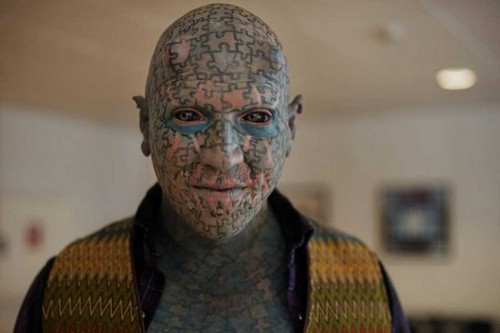When people meet someone who speaks many languages fluently, the first reaction is often one of slight bewilderment. Multilingualism is generally considered cool yet difficult to achieve, especially if second, third and fourth languages are acquired later in life. As an advocate of language learning, I of course agree that it’s cool, but I challenge the assumption that it’s difficult.
My name is
Luca Lampariello. Here I would like to deviate from the well-trodden route to
how I learned 11 languages and concentrate on
why I learned these languages. Seasoned language learners will all tell you that motivation is fundamental, so where can one find this motivation and how can it be bolstered?
Language learning is about much more than heaps of books and hours of study. It’s about travelling to marvellous places, meeting inspiring people, enjoying delicious food and embarking on innumerable journeys of self-discovery. I derive my motivation to learn more languages from these experiences; the experiences that these languages make possible.
"I agree that language learning is cool, but I challenge the assumption that it’s difficult."
Lesson learned: Languages cannot be taught, they can only be learned. Having someone or something to aid with the process is of great benefit. Find a guide, not an instructor.
English was already a world language by the time I turned 10 in 1991. Its study was mandatory. I struggled at first. I didn’t like the teacher, grammar explanations confused me, and the material was monotone. I thought I’d never learn it. Then my parents decided to hire a private English tutor. I was 13 and she was wonderful. She didn’t simply instruct me in the language, but helped me discover it - she set me on the right path to learning and, most importantly, learning to love language.
I started reading a lot of books in English. My aunt bought me The Hardy Boys for my birthday and after that there was no looking back. The combination of reading books, watching movies every day and talking to my tutor once a week for two years worked wonders. By the age of 15 I was fluent in English and in possession of a thick American accent.
"Learning is a treasure that will follow its owner everywhere." ‒ Chinese Proverb
Lesson learned: A language is a door to an entire world which is wholly worth exploring. So let your guard down and fall in love! With the language, with the country, with a person, or even with the food. There’s no greater motivation!
I started
learning French around the same time as I started learning English and encountered many of the same problems. That all changed at the age of fourteen, however, when I discovered that I could watch French TV. I started watching two hours every day after dinner. By the age of 15 I was fluent in French. A few hours of television a day did more than the previous three years in middle school. In 2010 I moved to Paris. Living there for three years enabled me to gain invaluable insights into French culture: history, traditions, jokes, cultural references, and a respect for French pride in their cuisine and language.
"Language is the road map of a culture. It tells you where its people come from and where they are going" – Rita Mae Brown
Lesson learned: If you find a method you like and which works for you, you can start learning any language by yourself. There is no one best method to learn a language. Find something that is effective for you. And above all, experiment!
German was the first language I started learning completely on my own. I don’t remember exactly why I embarked on this journey, but I remember I had no idea how to learn German. I spent a couple of months using a dusty grammar book dislodged from my grandmother’s bookcase. Gothic letters cascaded down the page imploring me to repeat vacuous grammar drills. I quickly became disheartened.
Then I saw a commercial on TV about a language series in 4 languages and decided to give it a go. While using it, I came up with my method: a special technique to absorb the basic patterns of any language in a light, natural and fun way. This
method came to me organically, and I quickly realised that it was effective for me. After using it for a year and a half, I met a bunch of Germans while on vacation. I will always remember their faces as they repeatedly asked in bewilderment,
“Wie kannst du so gut Deutsch?!” (how can you speak German so well?). This reaction and the resulting, privileged connection were enough to fuel my passion to perfect my German. From that moment on I started reading insatiably. The language had become an integral part of my life.
"If you talk to a man in a language he understands, that goes to his head. If you talk to him in his own language, that goes to his heart." ‒ Nelson Mandela
Lesson learned: Language learning offers you profound insights into your own, native language. If you learn a language similar to yours, speak it from the beginning. It’s easier than you perhaps imagine.
Spanish and Italian are like two sisters; different and yet similar at the same time. One common myth in Italy is that Spanish is easy: that you just have to speak Italian and add an “s” to every single word. The overall structure of the two languages is similar, but there are a fair few disparities in terms of pronunciation, intonation and idiomatic usage. In 2007 I did an exchange in Barcelona. Although I was immersed in a predominantly Catalan environment, I was living with a lively Spanish girl from Malaga and often went out with a lot of other Spanish people. The language simply rubbed off. By the time I came back to Rome, Spanish had become a part of me.
"Those who know nothing of foreign languages know nothing of their own." ‒ Johann Wolfgang von Goethe
Lesson learned: There is no such thing as a useless language. They will all come in handy sooner or later, so don’t let others determine what you learn. Allow yourself to be guided by your own interests and convictions.
I met Lotte, a Dutch girl, whilst camping in Northern Sardinia. She didn’t speak much English and we both became frustrated at our inability to communicate. We still had a great time together, but something was missing: a sense of incompleteness kept nagging at me, so I decided to learn Dutch. Lotte and I lost touch, but the language stayed with me. People insisted that Dutch was a completely useless language - they all speak English - but I stuck to it. I read books and magazines that my friends would bring back from the Netherlands. I knew I would use the language sooner or later, and have been proved right. Now I speak Dutch every day with my Dutch housemate. Speaking and expanding Dutch has become easy, effortless and interesting. The old adage that one must move to a country to learn the language is simply not true.
"Learn everything you can, anytime you can, from anyone you can; there will always come a time when you will be grateful you did." ‒ Sarah Caldwell
Lesson learned: Start working on pronunciation from the very beginning to avoid developing bad habits. Be flexible. If a language has an idiosyncratic feature, work on it more from the start.
I had been thinking about learning a Scandinavian language for quite some time when my Italian girlfriend at the time bought me a Swedish course for my birthday. Swedish sounds incredibly musical to my ears due to its peculiar intonation, but I found it quite difficult to grasp at the beginning. In 2004 I went to Stockholm for the first time and was immediately enamored by Swedish culture. I kept speaking Swedish, mostly with Norwegians, and watched movies and read books - mainly thrillers, as the Scandinavians are excellent at that. And the best thing of all? If you know Swedish, most Scandinavians will understand you, and you suddenly have access to a fascinating culture and way of thinking.
"To have another language is to possess a second soul." ‒ Charlemagne
Lesson learned: If you are about to give up on a language, actively search for something that reignites your desire to learn. Go to the country, meet someone, watch a movie, make a YouTube video. Anything goes.
After a few Romance and Germanic languages, I wanted to learn something new. Russian seemed exotic to me: incredibly rich, elegant and intriguingly complex. Thinking in Russian was tantamount to solving a mathematical conundrum for every sentence. My mind boggled as to how native Russians deal with it every day. I had nobody to help me and after 8 months I began to think that it had perhaps been a mistake to learn Russian. I had barely made any progress. I didn’t do much for 3 long years, and then I posted a
video on YouTube speaking Russian. The response astonished me. Not in my wildest dreams did I imagine so many people would leave such enthusiastic comments. Russians think that their language is difficult and inaccessible, so when they hear somebody uttering a couple of sentences they explode with joy. I subsequently started speaking Russian on a regular basis and slowly began to navigate my way confidently through Russian’s grammar maze.
"Learning is a treasure that will follow its owner everywhere." ‒ Chinese Proverb
Lesson learned: You can learn two languages at the same time provided that you organize your time and energy well.
I started learning European Portuguese at the exact same time as Mandarin. I had never learned two languages at the same time, and so I gave myself very precise guidelines. Portuguese, like Spanish, came very naturally to me. I focused on pronunciation, which can be tricky. Unstressed vowels are barely pronounced and sentences often seem like an uninterrupted sequence of consonants. Portuguese can even sound like Russian to untrained ears as a consequence. I often get asked why I opted for European Portuguese and not Brazilian Portuguese, which is much more widely spoken. The truth is that I often don’t choose a language. I let
languages choose me.
"Language is the blood of the soul into which thoughts run and out of which they grow." ‒ Oliver Wendell Holmes
Lesson learned: Travel is a truly great motivator. Travel as much as you can, whenever you can. It will open doors and push you to learn languages.
I visited Poland in 2012 for the second time in my life and simply fell in love with the country and its people. Other than using my bilingual translation technique, I also started speaking it from the very beginning by setting up a weekly language exchange with Michal, a Polish guy I had met in the summer of 2012. I highly recommend this approach if you are learning a slavic language and you already speak another one. Although Russian and Polish are quite different in many ways, the overall structure is the same, and knowing one helps enormously with learning the other. After a year I was relatively fluent in Polish and I
made a video on YouTubewith Michal on a visit to Poland. The video didn’t go unnoticed. A journalist interviewed me for a magazine and I ended up on Polish TV one year later.
"One language sets you in a corridor for life. Two languages open every door along the way." ‒ Frank Smith
Mandarin Chinese
Lesson learned: Don’t be intimidated by a language’s reputation.
I had heard that Chinese is notoriously difficult, and that’s why I had never contemplated learning it. Pushed by the unexpected success of my first YouTube videos, I wanted a new challenge. I started learning Mandarin Chinese in my own way, but I faced completely new challenges.
If somebody tells you that Chinese is
impossible to learn by yourself, as I once heard someone say, I can assure you that it is absolutely not true. It has its own complex aspects, but also some refreshingly easy ones as well. If you know how to tackle tones and
Chinese charactersthe right way, Chinese is, in the long run, not harder than any other language, and the reward of speaking it is immense. You come into contact with an incredible culture, and the Chinese are often pleasantly surprised if you speak their language well.
"The limits of my language are the limits of my world." ‒ Ludwig Wittgenstein
Japanese
Lesson Iearned: Some languages have completely new features, so be flexible and adapt your learning method to the language. If your approach is not working, change it! Don’t give up. Don’t give in.
When I started learning Japanese, I wanted a new challenge, but I didn’t imagine it would be so hard. I couldn’t even build simple sentences because the structure in Japanese was so completely different from any language I had ever learned. I initially thought that this problem was just temporary and could be solved by speaking more regularly, but this simply wasn’t the case. Japanese feels like my biggest challenge yet, but I’m confident that I will get there. I just need to recalibrate my approach and live the language.
"A different language is a different vision of life." ‒ Federico Fellini
Conclusion
Discovering a method to learn foreign languages is, without a doubt, one of the best things that has ever happened to me. Learning languages is an exhilarating experience. I didn’t do it by simply spending time at home staring blankly at verb tables. I did it by getting out there and living.
Speaking multiple languages is not and shouldn’t be an intellectual performance. It is an act of love towards yourself and others which helps you discover the amazing diversity of human nature as well as discovering the multiple facets of your personality. To those who ask me why I like learning so many languages I always reply: “I don’t live to learn languages, I learn languages to live a better life”.

 Every day at airports across the world, airline cabin crews have to deal with the lack of overhead bin space. We flight attendants do have wings, but unfortunately we do not have magic wands that allow us to fit every passenger’s bag aboard every flight. Airplane overhead bins are not designed to hold large amounts of suitcases, duffel bags, or musical instruments. That’s what the cargo space in the belly of the plane is for.
Every day at airports across the world, airline cabin crews have to deal with the lack of overhead bin space. We flight attendants do have wings, but unfortunately we do not have magic wands that allow us to fit every passenger’s bag aboard every flight. Airplane overhead bins are not designed to hold large amounts of suitcases, duffel bags, or musical instruments. That’s what the cargo space in the belly of the plane is for.

















